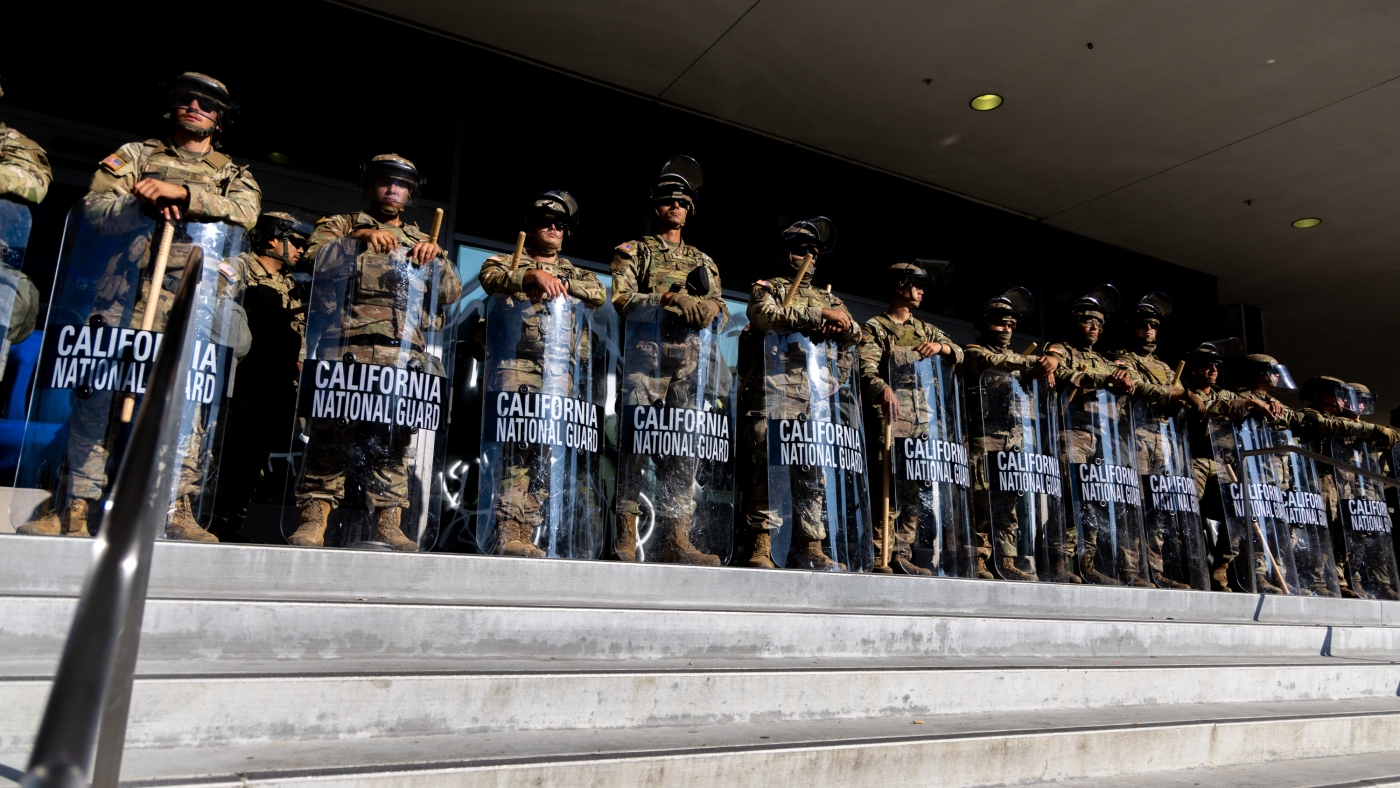The Battle for Control: Examining the Legal Dispute Over the California National Guard
The deployment of the California National Guard to Los Angeles ignited a high-stakes legal and political confrontation between President Donald Trump and Governor Gavin Newsom. At the heart of this dispute lies a fundamental question: who ultimately controls the state’s National Guard troops? This conflict was more than a mere disagreement; it challenged the established dynamics between federal and state authorities regarding National Guard deployments. A series of court rulings, culminating in a decision by the Ninth Circuit Court of Appeals, temporarily favored the Trump administration, allowing federal control of the 4,000 deployed troops to continue. This analysis explores the details of this conflict, examining the legal arguments, the timeline of events, and the implications of the court’s decision.
The Spark: Immigration Enforcement and State Response
The crisis began with immigration enforcement actions in Los Angeles, which sparked widespread protests. In response, the Trump administration deployed approximately 4,000 California National Guard troops to support federal law enforcement and maintain public safety. Governor Newsom, however, swiftly objected, asserting that the President had overstepped his authority. Newsom’s opposition was not just symbolic; he argued that the federal deployment diverted critical state resources, such as those needed for wildfire prevention, and potentially misused the Guard for inappropriate federal purposes. The core of the disagreement centered on the interpretation of the President’s authority over the National Guard, particularly under the statute invoked by the Trump administration.
The Legal Chessboard: Statutes and Constitutional Principles
The legal battle hinged on the interpretation of 10 U.S.C. § 251, a federal law governing the use of National Guard troops. This statute outlines the circumstances under which the President can federalize the National Guard, bringing it under direct federal control. The Trump administration argued that the President had the authority to federalize the Guard to enforce federal immigration laws, citing the need to support federal agents and maintain order. They also contended that the judiciary lacked the power to review the President’s decision regarding National Guard deployments under this statute.
Governor Newsom’s legal team countered that the President’s invocation of § 251 was improper. They argued that the statute was intended for national security threats or emergencies, not for routine law enforcement activities related to immigration. They also maintained that the President’s actions violated the Tenth Amendment, which reserves powers not delegated to the federal government to the states. A key point of contention was whether the protests in Los Angeles warranted federal intervention under the cited statute.
The Lower Court’s Verdict: A Victory for the State
Initially, a federal judge sided with Governor Newsom, issuing an order directing President Trump to return control of the National Guard troops to California. This ruling affirmed the principle of state control over its National Guard unless a clear and compelling federal justification existed. However, the Trump administration immediately appealed the decision to the Ninth Circuit Court of Appeals.
The appeal was expedited, and the Ninth Circuit agreed to hear arguments from both sides. During the hearing, judges reportedly expressed skepticism towards the state’s arguments, foreshadowing the eventual outcome. The Trump administration emphasized the President’s broad authority over national security matters and argued that judicial intervention would disrupt the effective enforcement of federal law.
The Ninth Circuit’s Ruling: A Temporary Stay
The Ninth Circuit Court of Appeals ultimately ruled in favor of the Trump administration, granting a temporary stay of the lower court’s order. This meant that President Trump could continue to maintain control of the California National Guard troops while the legal challenges proceeded. The court’s decision was unanimous, indicating a consensus among the judges regarding the legal issues at hand.
The 38-page ruling did not definitively resolve the underlying legal questions. Instead, it focused on the procedural aspects of the case, specifically the scope of judicial review over the President’s decision. The court indicated it would hold a further hearing to address the substantive legal arguments. The appeals court suggested that it would examine whether the President’s actions were within the bounds of his authority under § 251 and whether the deployment was justified by the circumstances in Los Angeles.
Broader Implications: Federal vs. State Authority
The Ninth Circuit’s decision represented a significant, albeit temporary, win for the Trump administration. It affirmed the President’s authority to deploy and control National Guard troops, even in the face of objections from state governors. However, the ruling did not end the legal battle. Governor Newsom vowed to continue pursuing the case, arguing that the President’s actions were unconstitutional and detrimental to the state’s interests.
The implications of this dispute extend beyond the specific case of the California National Guard. It raises fundamental questions about the balance of power between the federal government and the states, particularly in areas of law enforcement and national security. The outcome of the ongoing legal proceedings could have far-reaching consequences for the future deployment and control of National Guard troops across the country. The court’s willingness to review the President’s decision, despite initial skepticism, suggests a continued scrutiny of executive power and a commitment to upholding constitutional principles.
A Pause, Not a Resolution
The situation remains fluid. The Ninth Circuit’s decision to allow the continued federal control of the California National Guard is not a final judgment. It is a temporary measure designed to maintain the status quo while the court further examines the legal arguments. The case highlights the complex interplay between federal and state authority, and the ongoing tension between executive power and judicial review. The ultimate resolution will likely depend on a careful consideration of the relevant statutes, constitutional principles, and the specific facts of the case, setting a precedent for future interactions between the federal government and state National Guard forces. This legal battle underscores the delicate balance between national security needs and state autonomy, a balance that will continue to be tested in the years to come.











